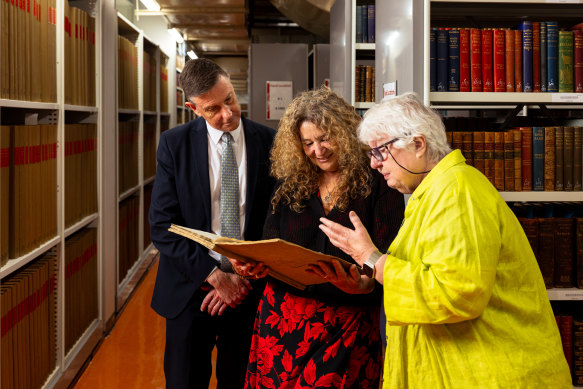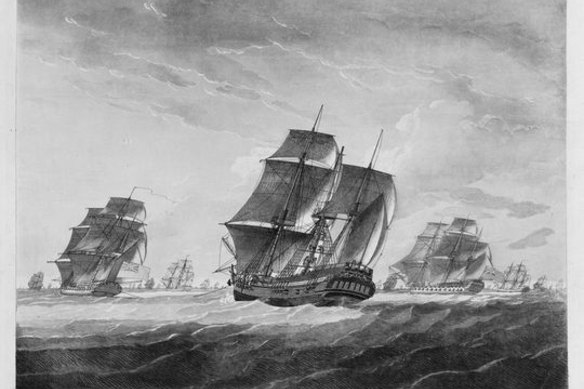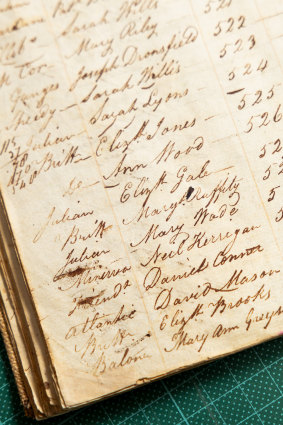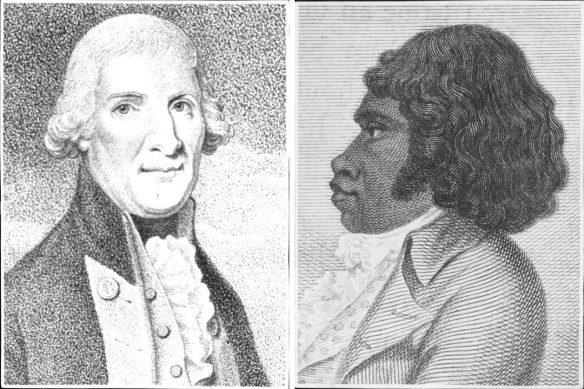By Julie Power
Warning: This story contains the name and image of a deceased Indigenous person.
If it wasn’t for the madness of King George, Australia may not have had former prime minister Kevin Rudd, the Speaker of the NSW Legislative Assembly Greg Piper and tens of thousands of others who descended from Second Fleet convict Mary Wade.

Martyn Killion, Director of Collections at Museums of History NSW, Deborah Bennett, NSW Parliamentary Librarian and Carol Liston AO, Adjunct Associate Professor at Western Sydney University with the Settlers Muster Book. Credit: Dominic Lorrimer
Sentenced to death at age 11 for stealing another child’s clothes, Wade’s sentence was commuted to penal transportation to Australia when the king was supposedly cured.
She was one of an estimated 1000 settlers and convicts from an estimated population of 5000 non-Indigenous men, women, and children who turned up for an early type of census, The Settlers’ Muster Book 1800.
With the book now available online on the NSW parliament’s new archive, Parlimento, Piper said the public could now discover a connection like his to Wade’s thousands of descendants.
“I’m part of this massive genealogical group,” he said.

The Second Fleet, six ships carrying convicts and settlers, arrived in Sydney in 1790. Credit: Canberra Times
Historian Carol Liston described the transportation of convicts to Australia in 1788 and 1790 as the “equivalent of sending an expedition to the moon and seeing if they survived for 12 years”.
“They didn’t know what was here, who would survive, and what they’d eat,” she said. “A bit like The Hunger Games, the first person executed was sentenced to death for stealing food.”
The most comprehensive surviving record of the early colony, The Settlers Muster Book – nominated for the UNESCO Australian Memory of the World Program – was digitised by the Museum of History NSW and the NSW Parliamentary Library.

UNESCO describes the book as one of the most significant documents from the early years of British colonisation in Australia.Credit: Dominic Lorrimer
The muster was organised by outgoing governor John Hunter and his replacement Philip Gidley King as a handover document.
An account of the Crown’s income, assets and liabilities, the handwritten ledger records who owned livestock and land, who was fed or employed by the Crown and who was self-sufficient. It listed trades, including 45 brick and tile makers, and six basket and broom makers.
Liston, an adjunct professor of history at Western Sydney University, said the book filled the gaps in our understanding of women in the early colony, many of whom were by then running farms.
It also highlights the “little people in history”, like John Stogdell, a convict who arrived with the First Fleet, and the relationships between early settlers and the local Indigenous people.
In contrast to well-known grazier John Macarthur, who is recorded in the book as owning 600 sheep, Stogdell arrived with nothing. By 1800 he was shown as managing 450 sheep for officers and others.

Captain Arthur Phillip and Woollarawarre Bennelong.
Stogdell was key to the close relationship that the colony’s governor, Arthur Phillip, developed with the Indigenous leader Woollarawarre Bennelong, said Liston. After Phillip was stabbed at Manly by a local Indigenous man, Willemerin, Bennelong was taken as a hostage to live with the governor in the new settlement.
In exchange for agreeing to remain in Manly as a hostage, Stogdell was reportedly asked by Bennelong and his wife, Barangaroo, to cut their hair with scissors, which showed a degree of intimacy and trust.
Start the day with a summary of the day’s most important and interesting stories, analysis and insights. Sign up for our Morning Edition newsletter.